I S S U E 11.5
Editorial
Paul Robert
Fragility and Tenacity: Nature in the Balance
The climate crisis may be approaching a tipping point at which the rotting raft of environmental sustainability disappears over a waterfall. Downstream it will be impossible to return to where we were, or where we are now. Geopolitical imperatives prioritise economic growth over environmental protection and fail to recognise the root causes of rising human migration and rapid biodiversity loss. Our myopia may be incompatible with our survival as a species on this planet.
In his book, Five Times Faster: Rethinking the Science, Economics and Diplomacy of Climate Change, Simon Sharpe argues that science is pulling its punches, diplomacy is picking the wrong battles, and economics has been fighting for the other side. In Our Fragile Moment: how lessons from the Earth’s past can help us survive the climate crisis, Michael Mann reminds us that human beings have been around for just two million years, a fleeting moment in 4.5 billion years of geological time. Earth managed just fine without Homo sapiens for most of its existence.
The narrow window of climate variability, within which human life is viable, is very fragile. When we look at nature, however, we see evidence of incredibly intelligent design and resilience. Spiders spin webs between wing mirrors and wings. Wildflowers push through cracks in concrete. Hedera creeps over tilted headstones. Richard Nicholls’ photographic series, ‘Tenacity’ illustrates this with images that are silent and stark. Perhaps nature will recover and repair the damage we leave behind, after we’ve erased ourselves from the picture.
In the meantime, we must maintain hope that our actions can make a difference. Appreciating the beauty of art and nature may feel like a low priority, but it could be a vital prerequisite to effective intervention. Francois Cheng wrote: ‘We are always at the beginning of things / In the fragile moment that holds the power of life / We are always at the morning of the world’. Mary Oliver asked: ‘Tell me, what is it you plan to do / with your one wild and precious life?’
In her introduction to ‘OUT OF TIME: Poetry from the Climate Emergency’ Kate Simpson acknowledges ‘this anthology cannot be a solution or a global source of awakening, no more than it can be truly representative of all the issues at hand . . . but it can do something’. The book suggests we are all compromised and complicit and must find ways to expand our linguistic repertoire, changing how it is interpreted, experienced, and understood through poetry. Sean Hewitt’s ‘Leaf’ concludes the anthology with a modicum of much-needed hope to hold up to the incipient catastrophe of climate change: ‘For even in the nighttime of life / it is worth living, just to hold it.’
We asked our contributors what poetry can usefully say and do to uncover truths about the paradox of nature’s fragility and its enduring tenacity. The contents of these digital features embody their response.
Examples of environmental destruction and restoration model our history and our hope. Language has power to harm and to heal. Through conscious attention, poetry connects us to the world around us. Ecopoetics reawakens our wonder at the world, reminding us why it matters that we inspire others with the words we leave behind. Our perception of beauty in nature determines our action to defend and save it. But nature may be more resilient than we are. Our legacy may be overshadowed and overgrown by nature itself once we have left the scene.
The nine poems here speak to nature’s fragility and tenacity, but also to heartbreak, optimism, migration, rage and resistance. From the muscular determination of the ancient olive tree of Vouves as a symbol of persistence, to the poignancy of penguins leaving their melting ice palace at Halley Bay and the touching absurdity of the curlew in the car park at Sainsbury’s. ‘Fishing for barrels’ casts potent imagery of tungsten drills bursting ‘the seabed’s clotted vein’, of oil bleeding in ‘tight black balloons’, and layers of meaning in ‘fishermen reeling’. ‘Future Tense’ reflects an improbable fusion of fragility and hope. The final tercet of ‘to the troubled house guest of my once and future self’ sounds a note of optimism: ‘You will be gloriously / & improbably alive on this burning planet, / glad you stayed to see our wanting turn becoming.’ And ‘The Swan’ presents an ‘illusion of serenity’ as she rages against the vision that only sees the world to be exploited for economic gain, not valued as our single source of life.
Poetry can and must change our view. Not just a call to action, poetry is action. If we write it.
